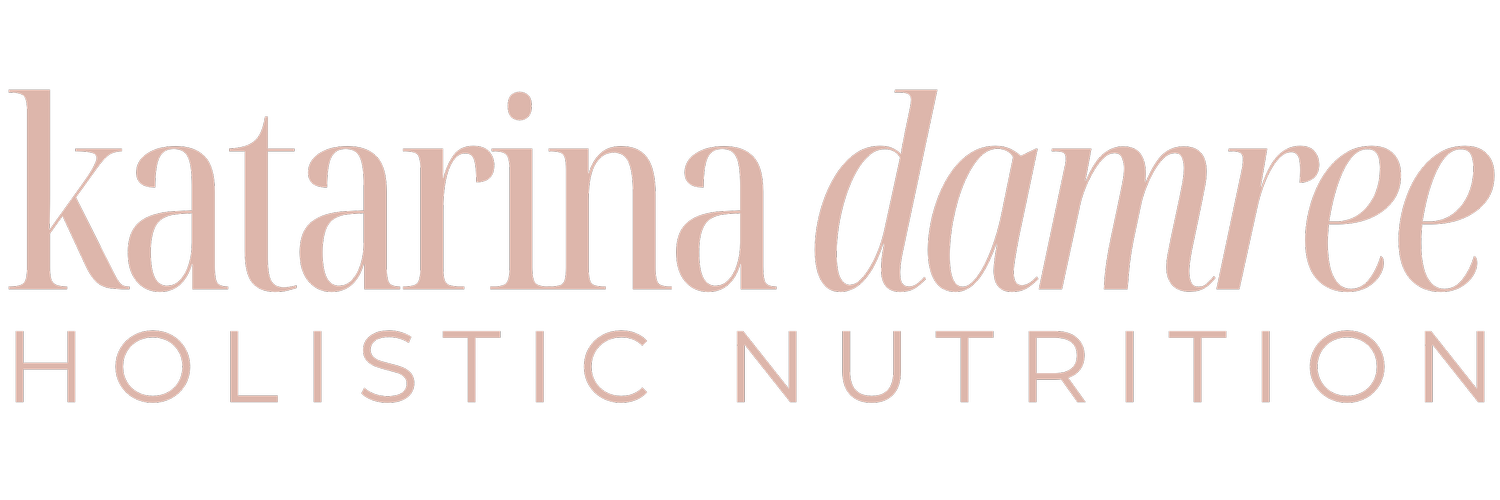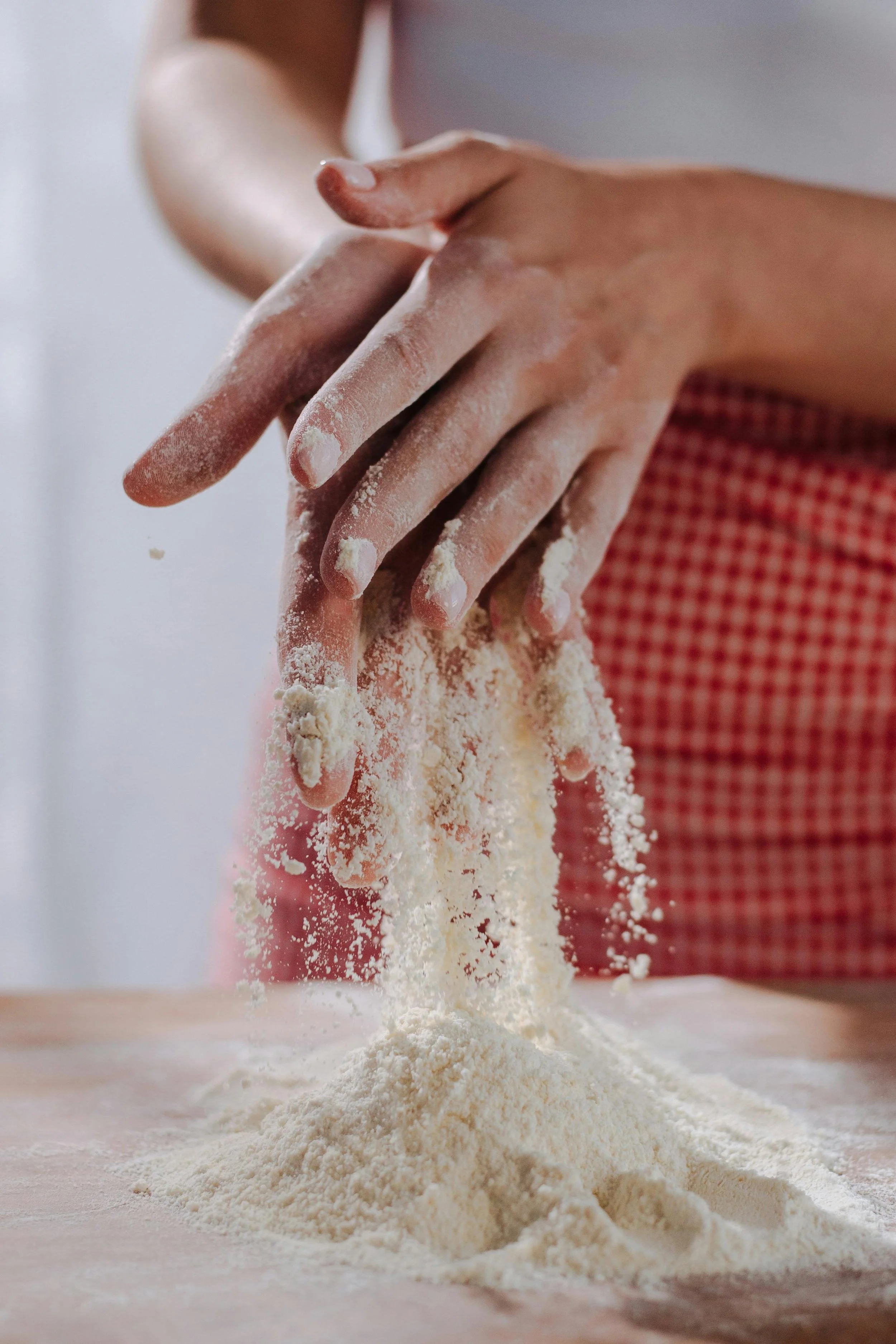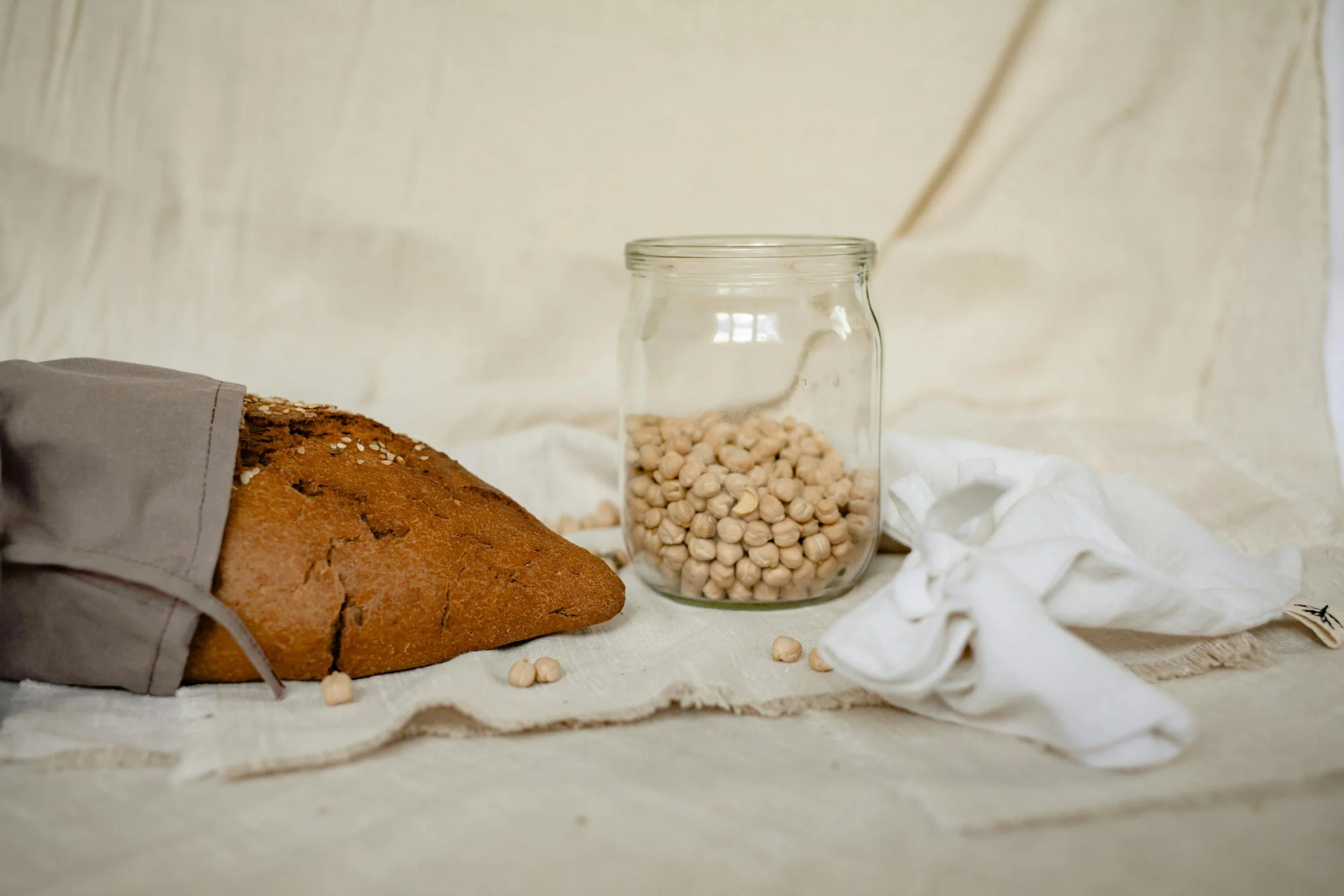“Flour, Reimagined: The Edit of Gluten-Free Staples”
Gluten free flour
When people hear gluten-free, they often think of cardboard-textured breads or overly dense muffins. But the truth is, gluten-free baking done right can be flavourful, nutrient-rich, and a joy to eat.
Whether you're exploring gluten-free alternatives due to a sensitivity, supporting gut health, or simply want to diversify your ingredients, there’s a world of flours beyond wheat that are worth discovering.
You don’t have to give up the joy of baked goods. You just might find your new favorite ingredients in the process.
Different grains
Baking with the littles
Why Go Gluten-Free (At Least Occasionally)?
While gluten isn’t inherently bad for everyone, more and more people are experiencing symptoms linked to gluten-containing foods: think bloating, fatigue, brain fog, or skin issues. In some cases, these may be due to gluten sensitivity, leaky gut, or even glyphosate residues in conventionally grown wheat products.
Choosing gluten-free flours (even occasionally) gives your digestive system a break and can open up a world of flavors and textures you didn’t know you were missing.
A Guide to Gluten-Free Flours
Here are some of my go-to gluten-free flour options, each with its own nutritional benefits and culinary personality:
Buckwheat
Despite its name, it's completely gluten-free. Nutty and hearty, it’s amazing in pancakes, crepes, or rustic breads.
Millet Flour
Light and slightly sweet. Great in muffins and waffles, but don’t overdo it as it can become starchy and coarse.
Sorghum Flour
Closest in taste and texture to wheat flour. Perfect for breads and cookies, though it can darken the final bake slightly.
Amaranth Flour
A protein and fiber superstar. Use sparingly and mix with lighter flours to avoid density in cakes and muffins.
Black Beans
Yes, beans! Ideal in chocolate baked goods like brownies and truffles. Fiber-rich and flour-free.
Chickpea Flour
Dense and binding. Best for savoury bakes, cookies, crepes, or gluten-free breads. And don’t forget socca: a thin, savoury pancake made with chickpea flour, olive oil, water, and salt.
Coconut Flour
Super absorbent and fluffy. Use only 1/4–1/3 as much as regular flour and mix with almond flour to prevent crumbling.
Teff Flour
Nutty and earthy, packed with calcium and iron. Lovely in brownies, cookies, and pancakes.
Cassava (Yucca) Flour
A fiber-filled, starchy flour that blends well and mimics wheat beautifully—great in most baked goods.
Almond Flour
Naturally sweet and moist. Perfect for muffins, pie crusts, and grain-free cornbread.
Arrowroot
A silky thickener for sauces or glossy glazes. Also helpful in softening dense gluten-free blends.
Potato Flour & Starch
Adds moisture and binds dough. Great in breads and rolls, but a little goes a long way.
Brown Rice Flour
Nutritious but can be gritty. Best used with other flours in cookies or hearty breads. But makes an amazing chocolate cupcake.
Sweet White Rice Flour
Great for lightening cakes and adding structure, especially in gluten-free blends.
Tapioca Flour
Adds chewiness and bounce to baked goods. Use with care as it can turn chalky if overused.
Gluten-Free Doesn’t Mean Flavour Free
In fact, it can mean more flavour, more variety, and more nourishment. These alternative flours bring unique textures and nutrients to the table with more fibre, more protein, and a host of micronutrients.
Experiment with blends, try something new, and don’t be afraid to play in the kitchen. Gluten-free isn’t just a “substitute”…it can be a true upgrade.
Chickpea bread
Pro Tip
Try rotating your flours seasonally to diversify your gut microbiome and reduce dietary monotony. One week it’s teff brownies, the next it’s chickpea crepes or cassava tortillas. Happy exploring!




